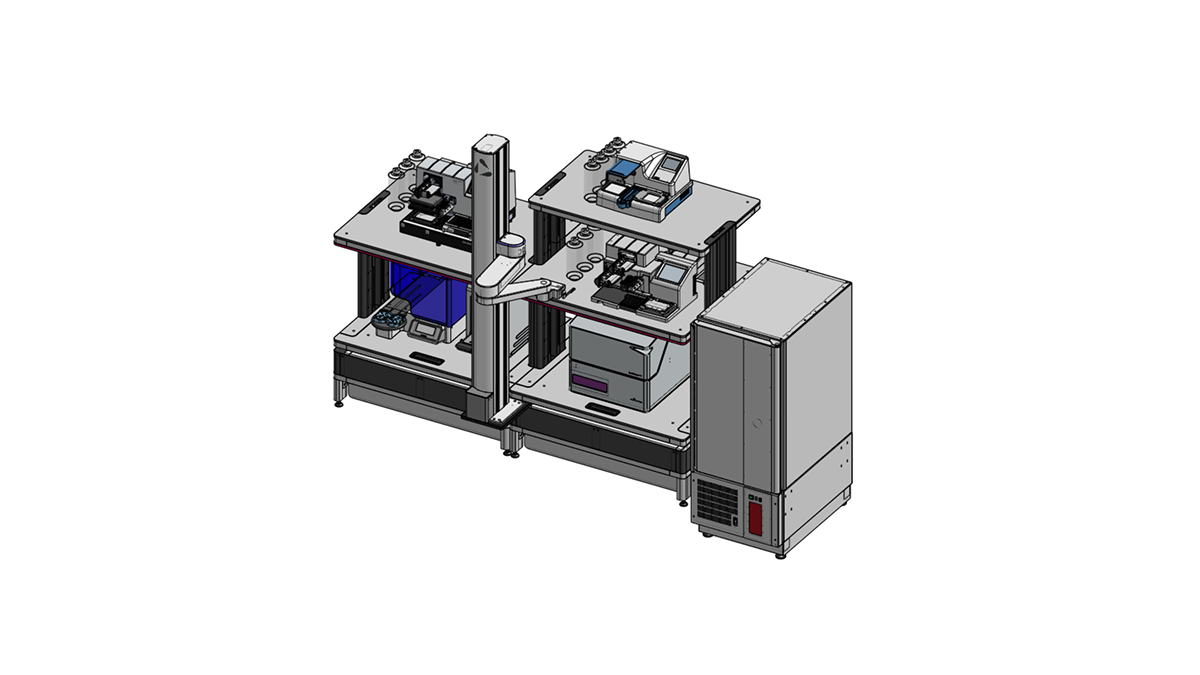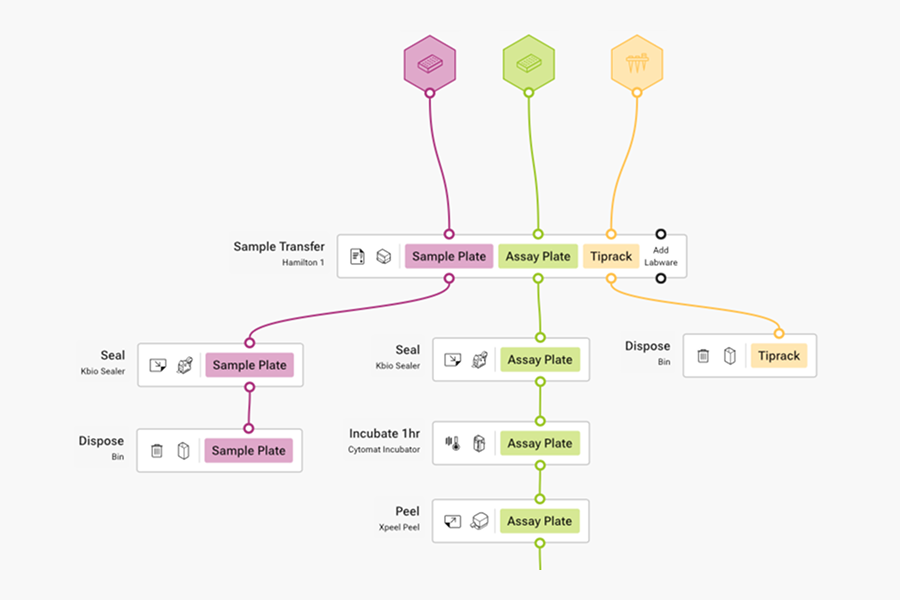ELISA
Truly Hands-Off ELISA Automation
Elevate your ELISA workflows with Automata's LINQ platform—a flexible, modular automation solution designed to integrate seamlessly into your existing lab setup.
Scalable Throughput
Process large numbers of microplates per day, enabling high-throughput screening without compromising accuracy.
Integrated Workflow Management
LINQ's cloud-based software orchestrates each step of the ELISA process, providing real-time monitoring and seamless data transfer to your LIMS.
Vendor-Agnostic Integration
Connects with a wide range of lab instruments, allowing you to leverage existing equipment and adapt to evolving assay requirements.
Enhanced Data Traceability
Automated barcode scanning and data logging ensure comprehensive traceability for each sample, facilitating compliance with regulatory standards.
Solutions
ELISA system
3D visualization of the versatile work-cell highlighting key components for fully automated ELISA and other immunoassays.

Using LINQ Canvas for your ELISA system

LINQ Canvas
Use LINQ Canvas to build workflows containing colour-coded labware. Track the location of each item during the entire process.

